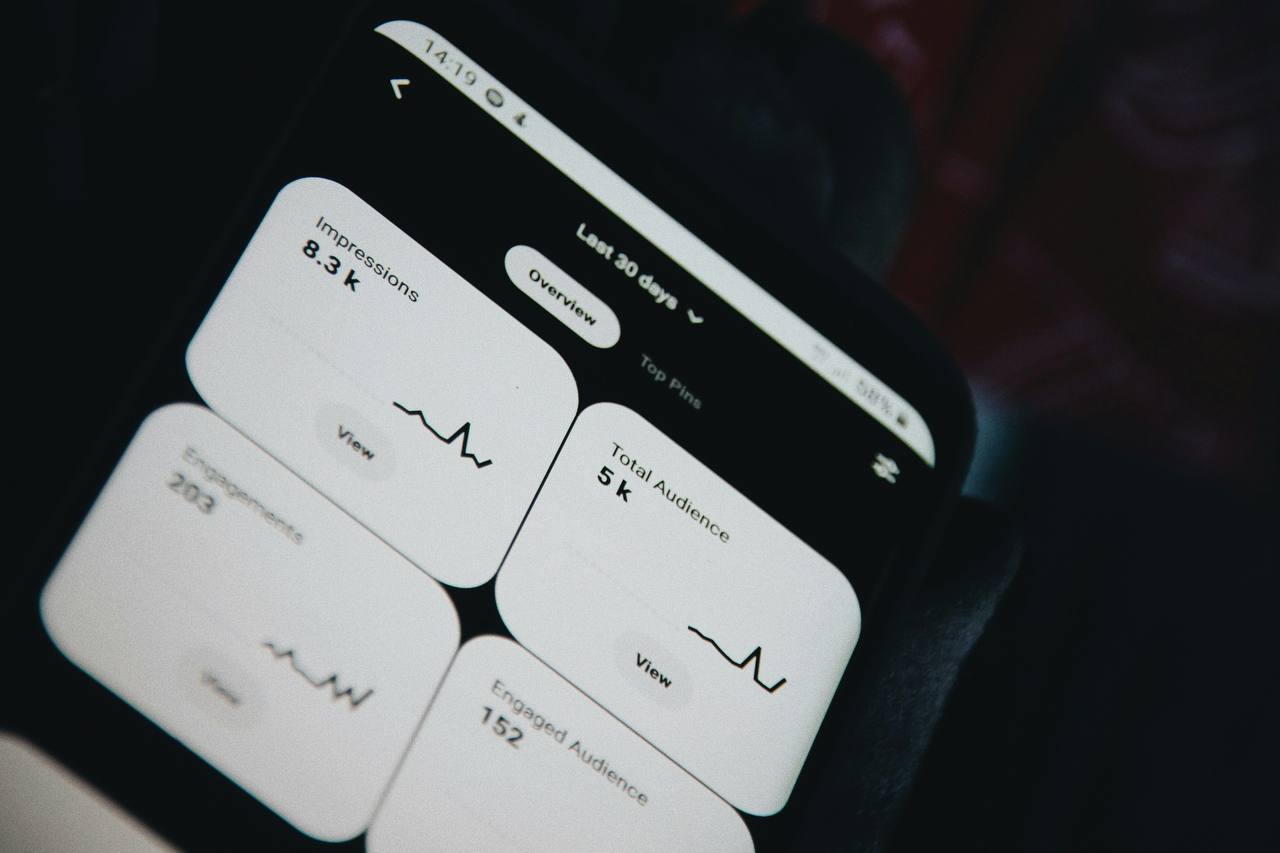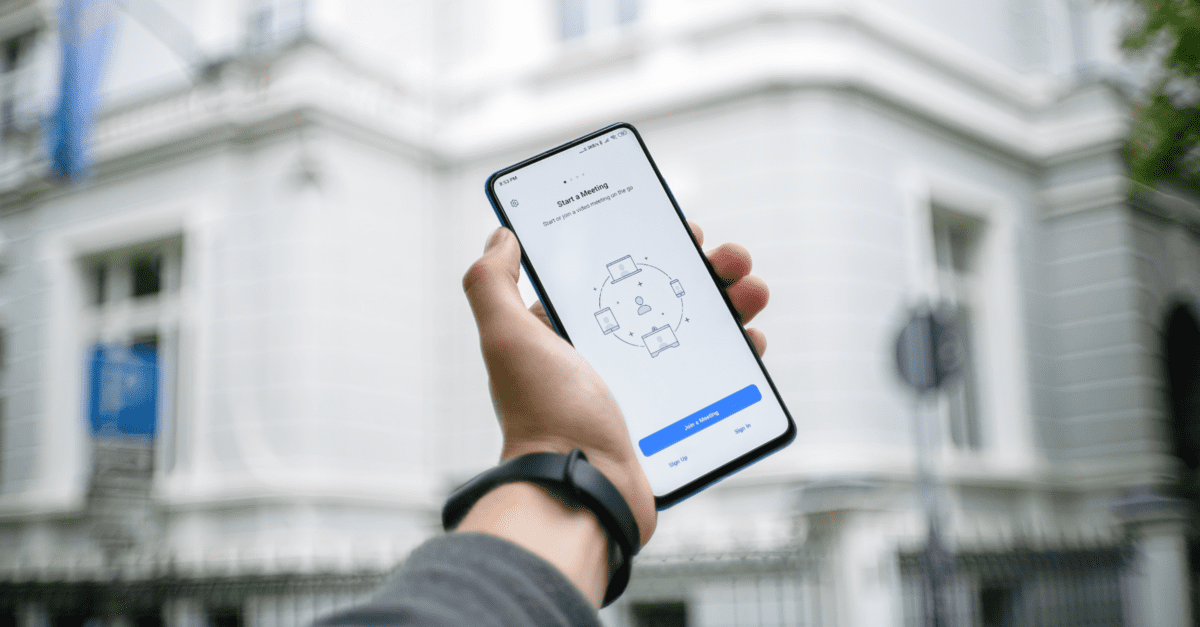COVID-19 has made us aware of the importance of digital technologies, and many industries have adopted the latest technology trends to be in the race. Growing customer demands have forced businesses to take a step into the digital world.
Industries such as healthcare, entertainment, education, food and fintech are looking for leading mobile app development companies to help them acquire the best solutions to grow their customer base.
Read Also: How to Make a Payday Loan Website?
Here in this article, we will put together a How to Create a Fintech App guide, including essential points to consider. As we know, many entrepreneurs are interested in starting a Fintech services business, but they should enter the industry with a Fintech application to get off to a good start. Keep reading our article to get an idea of the Fintech application development process and its cost.
What is Fintech Application Development?
Fintech apps have been popular for the last several years, with startups, banks and financial institutions looking to grow their businesses and raise capital. It is popularity and profitability that stimulate businesses to seek help on how to build a Fintech App increasingly. These Fintech solutions are beneficial for both companies and users as they can easily and quickly access financial services at any time with the help of technology.
A Fintech application can be created using various technologies such as machine learning, artificial intelligence, and blockchain. These digital solutions, built using modern technology, help streamline and improve the delivery of financial services.
Over time, the Fintech market has successfully provided secure, convenient, and scalable financial services to its customers through mobile devices. Because of this, businesses that are new to the field or are planning to invest in this sector currently have to go through pressure to come up with something unique to grab the attention of customers.
Read Also: How to Build a Peer-to-Peer (P2P) Marketplace Website?


Fintech app development is the process of creating Fintech apps for smartphones, tablets, and other mobile devices that will run on specific mobile platforms. To date, there are 2 main platforms for mobile operating systems – Android and iOS, and the less popular Windows Phone and Symbian.
We should also add that Fintech application development starts with an idea and its cost and ends with application prototyping, coding, and testing.
In this article, we will tell you how to create a Fintech app, what trends in Fintech app development will be in 2022, what must-have and advanced features need to be added to the application, and many other helpful things.
News and Fintech Apps Market Overview
In 2020-2021, Fintech has developed at a rapid pace and will continue to do so. According to the Global Fintech Market Size, Status, and Forecast Report 2018-2025, “by the end of 2025, the size of the global Fintech market will grow to $124.3 billion at a compound annual growth rate (CAGR) of 23.84%.”
According to McKinsey, this decade is a moment of extraordinary digital advancement. The world aspires for digital transformation, and it remains the top goal for enterprises these days. Given such Fintech data, app development in the Fintech business is bound to increase both volume and the sophistication of the technology used.
What Are The Main Eight Types of Fintech Apps?
If you want to know how to build a Fintech app, it is important to be aware of the various existing types of Fintech applications in this field. To determine how to make a Fintech application, you should choose the right direction for its development. To help you with these tasks, we have listed the major categories of applications. This will give you up-to-date insight into current Fintech market trends.
Banking Apps / NeoBank Apps
Currently, most banks prefer mobile banking applications to provide enhanced services to their customers, but only a few of them meet users’ expectations. Many users also use these services as they are enthusiastic about the convenient banking experience. Banking applications allow users to transfer and manage money without visiting the bank easily.
Mobile banking startups also provide banks with many benefits, such as a wide range of banking services provided to customers to make banks more competitive and including additional services to increase revenue. Some great examples of mobile banking apps are Revolt, Starling, Monese, etc.
Neobanks are very similar to regular banking applications. However, there is a significant difference. Neobanks can function without a physical bank. The Neobank application has the same functionality as regular banks, and sometimes they are even more advanced. Some examples of Neobanks are: Chime, Current, Aspiration, AWSM bank.
You can find more detailed information about Neobanks and their development in our article How to Start a Neobank? [A Step-by-Step Guide on Neobank Development].
Payment Apps
Digital payments form the largest branch of the Fintech industry. According to Statista, the total value of digital payments worldwide in 2020 was $4,769,370 million.
Digital payments meet the need for cashless, fast, and secure money transfers. Solutions such as online payment systems and digital currencies help to meet this need.
By looking at the following popular platforms, you can get an idea of developing an application that deals with digital payments:
- PayPal is a digital payment platform. It enables secure transactions between customers and suppliers without exposing their financial details. PayPal supports a wide range of credit and debit cards that you can register with your account.
- Payoneer is an online system that allows you to make domestic and cross-border money transfers.


Loan Apps
When starting a Fintech services business, most companies prefer digital lending apps. You can start with a simple website or app, or opt for an AI-enabled solution to maintain relationships between borrowers and lenders.
While money-lending apps operate on different models, they all share a common goal of connecting people who require money with those who can lend money to others while receiving some additional benefits. We can consider ZestFinance, PaySense, Earnin, HelpPays (application we worked on), as examples of digital loan applications. If you want to know how to create a loan application, check our practical guide on How to Create a Money Lending App.
Personal Finance Apps
These types of apps help people manage money and plan their monthly or yearly budgets by saving or keeping track of their expenses. Personal finance apps usually do not include payment processing services.
These apps are less complex when it comes to entry-level fintech apps in terms of a limited budget. The most famous personal finance apps are Finch, Mint, StockApp (application we worked on). A striking example of a personal finance app is e-wallets. If you want to learn how to create an e-wallet, read our detailed article about this topic.
Cryptocurrency Apps
Another type of app you need to know, considering how to build a Fintech app question, is a cryptocurrency application. These mobile apps allow people to buy, store and sell cryptocurrencies. The popularity of such financial applications is growing every day, so we recommend that you take a closer look at this option. The most popular examples of cryptocurrency applications are Coinbase, Binance, FXF – one of our best project!
Let’s polish your idea and create a cool solution together!
Trading / Stock Apps
Investment apps are an excellent opportunity to get started in the stock market. Investment management solutions enable users to improve the performance of their investments by providing them with relevant analytics and data. If you want to create a digital investment app, you can check out Addepar.
Addepar is an investment management solution for advisors and investors. The application handles various types of assets in any currency.
Insurance Apps
The purpose of such mobile apps is to speed up policy administration and insurance processing. Using an insurance application, people can quickly take out insurance in any place where they are. If you consider building an insurance app for Fintech in the insurance sector, take a look at the BIMA app.
BIMA is a mobile insurance provider. The app partners with mobile operators and financial companies to provide millions of low-income people with insurance and underwriting. BIMA provides life, accident, and health microinsurance options.
Mortgage Apps
Thanks to such FinTech apps, people can get a mortgage with just a few clicks using their mobile phones. People no longer have to stand in lines and sign hundreds of papers. They can do everything online. Examples of famous mortgage apps are Rocket Mortgage, Mortgage by Zillow, and other Fintech apps.


What Do You Need to Know Before Building a Fintech App?
Before starting Fintech app development, you need to think about the following things:
Legal Restrictions
Here are some legal aspects to remember which help you solve how to build Fintech apps question:
- GDPR compliance. If you develop an application for the EU market, you should ensure that your loan app is GDPR-compliant. GDPR, or General Data Protection Regulation, went into force on May 25, 2018. If you don’t want to get fined, you can’t disregard or skip this step.
- CCPA compliance. The California Consumer Privacy Act (CCPA) is the law you must follow if you develop applications for California citizens. This law’s major purpose is to give people more control over their personal data. If California is your target market, you must make your money lending app CCPA-compliant beginning January 1, 2020.
- Remember that local rules and regulations may differ; everything depends on the place you intend to create a money lending application. So, whether Asia, the United Kingdom, Australia, or other locations are your target markets, pay attention to each region’s local rules.
UX is Important
The success of a Fintech app depends on a combination of factors, and obviously, mobile experience (UX) is the main one. Apps that stand out from other products tend to have good UX. There are many components that (in the optimal combination) will make the interaction experience unforgettable.
In developing mobile UX, it is essential to rely on best practices, on practices already in use in the Fintech industry. After all, it is better to use something with which users are already familiar. UX is especially important for applications such as online wallets, personal banking, and those that people use every day several times.
When we worked on the FXF project (a project we’ll cover in more detail later), we completely changed the UX. The product immediately became more convenient, logical, and understandable for users, thanks to this. Sometimes by changing the UX, you can completely change the product (the main thing is for the better 😁)
Only Full App Development Team
To end up with a great product with the right set of features, attractive design, and outstanding performance, you need a team of professionals. Unfortunately, it is unlikely that you will succeed by hiring individual specialists.
You will need a full app development company for fast and high-quality work. Such a team should comprise the following specialists:
- BA (Business Analyst)
- PM (Project Manager)
- UX designer
- UI designer
- Front-end developer
- Back-end developer
- QA
- DevOps
Read Also: How to Build a Software Development Team?
Monetization Strategy
Another thing you should think about in how to build a Fintech app question is the monetization strategy. In essence, this is a search for a way to make money through your application. There are several examples of how you can monetize your Fintech mobile application:
- Ads in the app
- In-app purchases and subscriptions
- Using the freemium model
- Combining multiple monetization strategies
There can be a lot of options for strategies, but you should choose the most suitable and convenient for your business.
What is Your Fintech App Idea?
Behind every successful product is a good idea. Without an idea, you are unlikely to be able to create something really worthwhile. Therefore, think well about what you want to create, how it should look, what is the goal of your future product, etc.
And it will be great if you write it all down. It will be the beginning of your plan for the design and development of the Fintech apps. For example, your idea might be to create a cryptocurrency app with built-in crypto trading training.
You Need to Build a Product Development Cycle
The essential thing that you need to know in how to develop a Fintech app is the development cycle. It is crucial that you initially build a product development cycle. That is, you should not only determine the starting and ending points of development, but also consider that the process of creating a product always goes in a circle.
The processes are repeated until the product starts to function as you and your users want. Usually, the product development cycle includes:
- Idea generation
- Idea screening
- Concept development and testing
- Market strategy/Business analysis
- Product development
- Market testing
- Market entry/commercialization
You Need Strong Finance and Legal Department
Since you will develop a mobile application directly related to money, you should have a strong and experienced finance and legal department. It will advise you at all stages of creating a product and suggest how to make your application completely transparent in terms of legality and law.
Top Fintech App Development Challenges
When looking for solutions on how to develop a Fintech app, as in creating any product, difficulties arise. And for you to be ready for these challenges, we have compiled a list of the main ones. So let’s look at them in more detail:
Fintech App Security
Again, your application will contain a lot of users’ private information as well as their money. Therefore, you need to think in advance, in the frames of a how to develop a Fintech app question, about ensuring that your Fintech application is as secure and reliable as feasible.


Cyberattacks protection
Be prepared for your application to be attacked by scammers. That is common with banks. Therefore, it is necessary to configure the system so that you can quickly respond and prevent data leakage in case of any third-party intervention.
Focus on Target Audience
It is essential to focus on your product’s audience in the frames of how to develop a Fintech app question. If you spread yourself across very different age groups or a group of people in a certain area of employment, you will not be able to create a product that will be in demand. So don’t forget who your potential customers are and their needs.
Perfect Usability
Good usability depends on whether your Fintech application is available, clear, credible, learnable, and relevant to the people who actually use it.
A well-thought-out design directs visitors to the quickest and least time-consuming path possible. As a result, you’ll need to have a thorough grasp of your users’ environments. Allowing for their limits, such as potential distractions and cognitive strain, can help you achieve your goal.
Right Fintech App Development Architecture
Your product team should think carefully about the architecture and internal logic of the application. It will help during the development process. Before the team’s eyes, they will already have a clear scheme of where what should be and how to work. Therefore, architecture is essential! How well the architecture will be built depends on the skills and knowledge of the team. So choose your partner carefully!
Fintech App Development Stack and Technology
In addition, a critical component of the planning process and a kind of challenge in the frames of how to develop a Fintech app question is the choice of tech stack and technologies.
This will determine how smoothly your Fintech application will run. Therefore, we advise you to think carefully and study the various stacks and technologies that are used in the development of Fintech applications. Also, listen to the professionals. You can contact us, and we will be happy to advise you.
Development of proper functionality
Many companies make a significant mistake when they add a lot of different features to their Fintech application. We advise you not to overload the application with functions. Users want to achieve their goals through mobile applications quickly.
As a result, identifying the most important functionality and incorporating it into your product is critical. Also, remember that the functionality that you add to your Fintech application should work correctly and without interruption. Here, the best methodology you can use is building an MVP. You can read more about this in our article How To Create a Minimum Viable Product (MVP)? [Startup Case Studies].
Great App Integration
One more point which you need to consider in the frames of a how to develop a Fintech app question is integration. Your Fintech application should be able to integrate with other systems. This will expand the application’s capabilities and become an additional value for users.
Top Fintech App Development Trends in 2024
How to build a Fintech app that will be popular and in-demand? First, you should be aware of Fintech app development trends. Let’s take a look at the most common trends for 2022:
AI / Big Data / ML
Financial companies widely use the latest technologies. We’re talking about a wide range of applications, from basic automatic tips for customers to complicated algorithms for credit history evaluation.
The rapid development of artificial intelligence and process automation provides many additional opportunities for the mobile banking app sector.
For example, it can improve risk assessment, operational improvements through data analytics, and customer experience. Each of these parameters increases the chances of financial institutions in the fight for new users.
Blockchain Technology / NFT
The more independence the user gets, the better. Blockchain allows customers to increase control over their own assets. Although financial players are adopting the innovation cautiously and gradually, the increase in the number of blockchain-based startups indicates its demand.
Now blockchain is used in many areas because security, speed, transparency, and versatility create the necessary advantages. This trend will be with us for a long time.
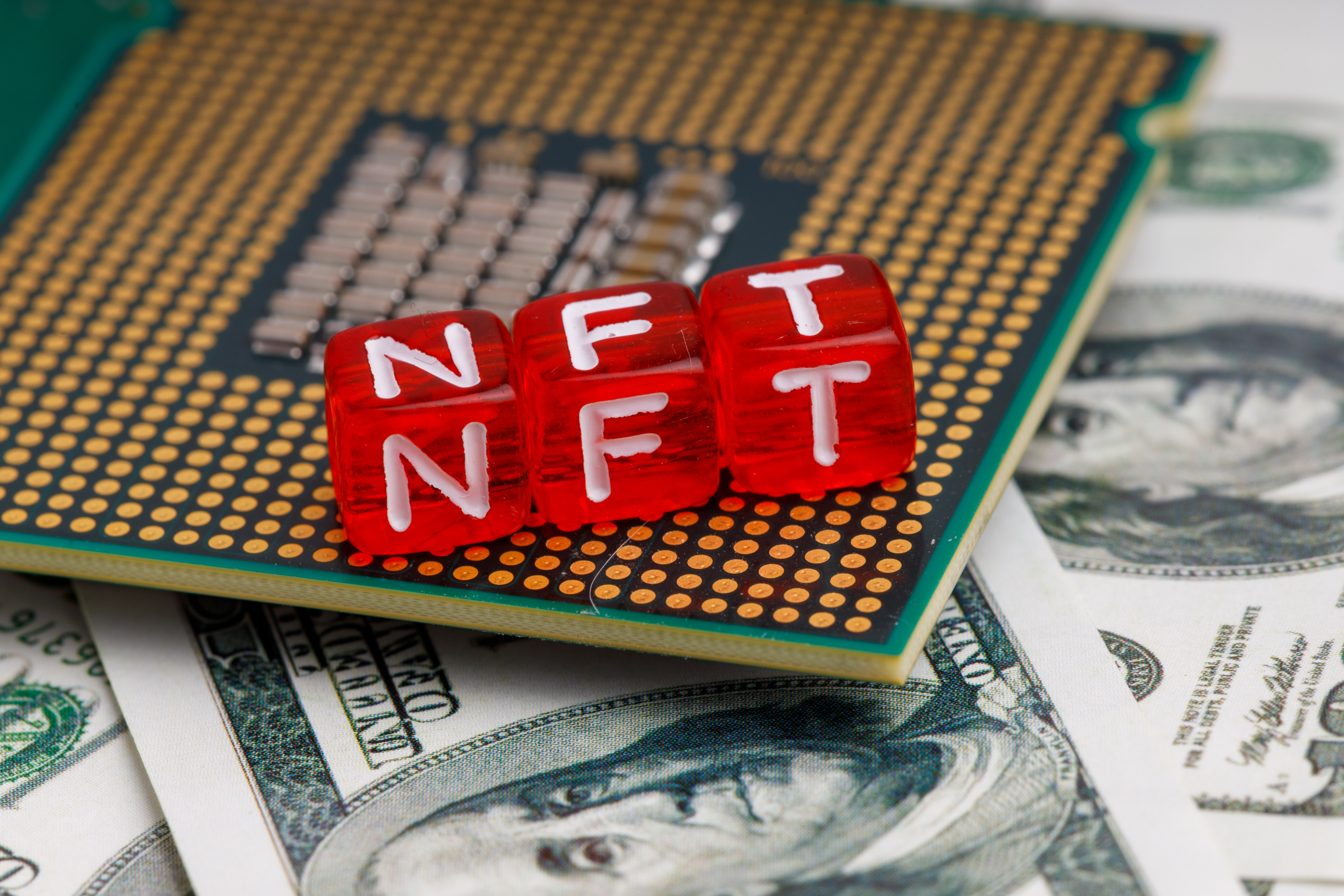

Platform as a Service
Financial organizations can easily adapt to market needs and legislative changes with PaaS. The tools you need allow you to perform many tasks, including managing resources, processing payments quickly, and better understanding credit risk.
Embedded finance
Embedded Finance is an opportunity to part with money conveniently and quickly at any time and in any place. There is no longer any need for POS terminals or physical plastic – everything has gone digital. We are one step away from the payment method from the Altered Carbon series, where the main character simply spits on the sensor.
Must-Have Fintech App Features
Now let’s look at the list of features that should definitely be in your Fintech application:
Registration
Registration is one of the essential features of a financial app. Without it, the user will not be able to use your application. Make registration as easy and time-saving as possible. Add the ability for users to register using their email or Facebook, for example.
Personal account
A users’ personal account is needed to store their bank cards there, for example, view payment statistics, manage stocks, and much more. A personal account should be minimalistic, without unnecessary details. It should be easy for users to find what they need.
Payment gateway
Be sure to add the ability to make payments to your Fintech application. It doesn’t matter if you are creating a regular banking application or a cryptocurrency application. A payment gateway is needed everywhere.
How to Make a Payday Loan Website? [Your 2023 Guide]
Financial management
Let your users be able to manage their finances. This can be payment planning, financial management in a particular plan, expense planning, setting limits for online payments, etc. This way, people can manage their money and get the most out of the app.
Connecting or creating bank cards
Any Fintech application should be able to connect cards. After all, without it, the application becomes almost useless. You can also add the card creation function directly to the application if, for example, you are developing an application for a bank.
Notification
For users to always be aware of what is happening in their application, add a notification function. In this way, users will always be notified if, for example, they have transferred money to a card or the bitcoin rate has doubled.
History of transactions and interactions
Add a history of transactions and interactions to your application so that users can control the movement of their money and quickly find the person with whom they have financially interacted recently.
Interaction templates
For convenience and time saving, add interaction templates to your Fintech application. For example, these could be utility payment templates or monthly mortgage payment templates.
Onboarding system
Onboarding is needed so that the user who enters your application quickly learns how to use it for the first time. You can add minimal onboarding (for example, a couple of instructions and diagrams on how to use the application), or you can use advanced methods (for example, use a highlight so that users know where and when they need to click).
Chatbots
Chatbots are everywhere now, really. They help automate many processes. And for Fintech applications, they are also indispensable helpers. Add a chatbot to your app to save time for your employees to resolve any issues and speed up user interaction with your app.
Advanced Fintech App Features
We would also like to tell you about the advanced features you can add to your Fintech mobile application to make it more competitive and in demand. Let’s look at them in more detail:
Biometric scanning
To identify the user in the application, you can use biometrics – for example, scanners of the iris, facial geometry, or a fingerprint. The use of such technologies is now very popular.
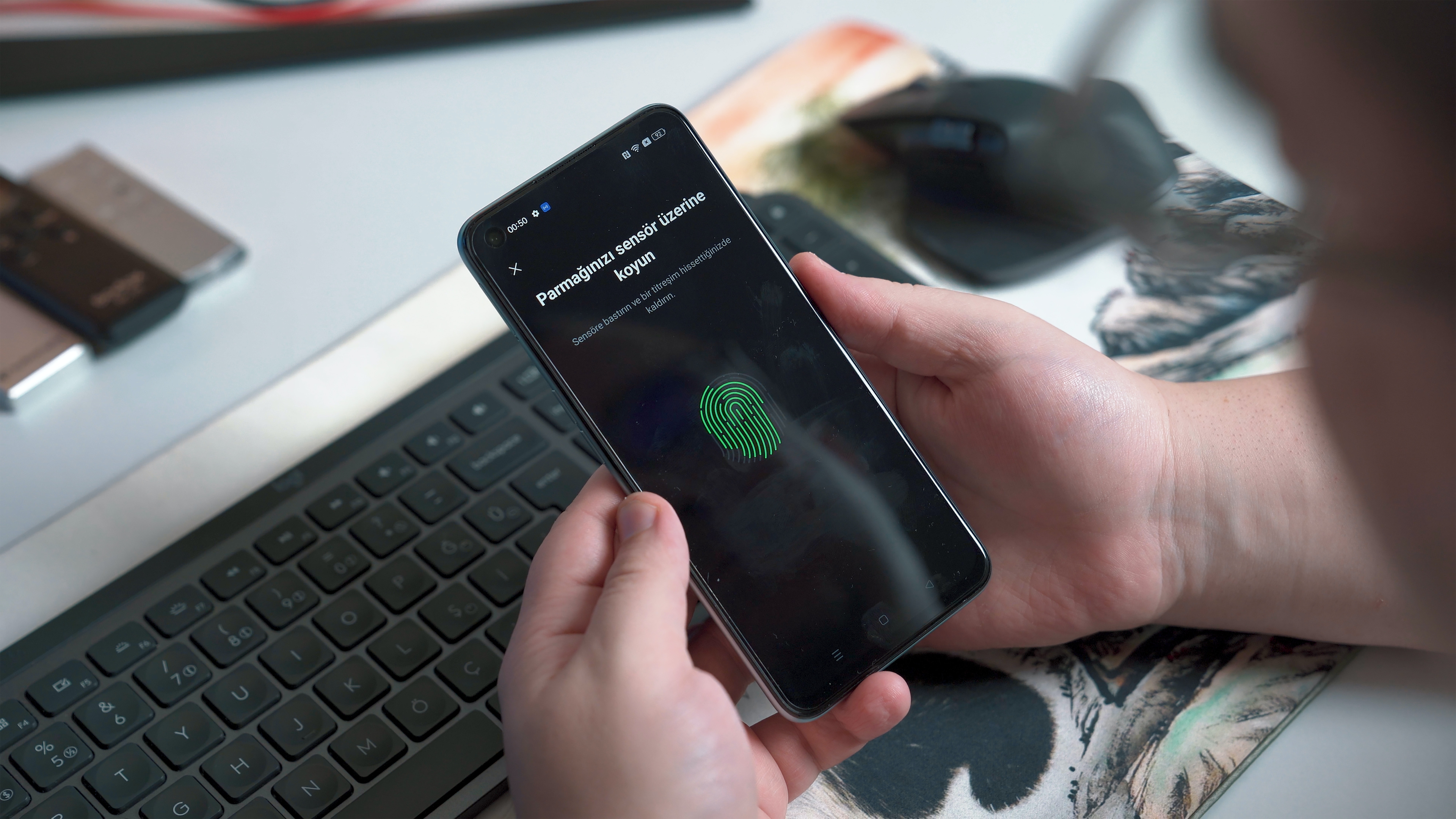

Two-factor authentication
This feature will help make logging into the application and user account more secure. Make it so that users receive a confirmation on their phone or email address when logging into their account.
KYC
KYC, or “Know Your Customer” practice, is a procedure for identifying mandatory counterparties for financial institutions, stock exchanges, bookmakers. If you do not use special tools, obtaining information about individuals and legal entities can take a long time, and the quality of the data obtained is not guaranteed.
Cashback
A cashback feature will allow users to receive a certain percentage of the money they spend. Most often, different categories of goods have a different percentage of cashback. This feature is ideal for regular banking applications or neobanks.
Card scanning
This feature will speed up the process, for example, of money transfer. Users ser will not spend time entering the card number manually, they can simply scan it, and the card will appear on the mobile screen within a second.
Education
Now it has become quite popular to add financial literacy training directly to a mobile application. It will be useful for students and children, for example.
AWSM Bank, the project we worked on, makes a big focus on children’s financial literacy. Using the application, children can learn how to open deposits, for example, or take loans.
Dynamic CVV2
Dynamic CVV will provide good protection for users in case their phone is lost, for example. Dynamic CVV is a CVV that changes periodically.
Cost tracking
This feature will help users get statistics about their spending. Most often, Fintech application users can see their expenses by categories (e.g., food, home, study, etc.)
Referral system
Bank users can invite their friends, colleagues, family members, etc., to use the bank using the referral system. Most often, Fintech applications give some kind of bonus for this.
Work-based on the referral program has become one of the main growth elements, the best in the history of neobanking in Ukraine – Monobank.
Which Technology Stack is the Best for Fintech App Development?
Let’s look at which tech stacks are best for developing Fintech applications. Let’s take a closer look at tech stacks for different systems:
IOS
Here is what we recommend to use for Fintech app development for the IOS system:
Language: Objective-C, Swift.
Core: iOS SDK, CocoaTouch / Multimedia.
Analytics: Firebase, Amplitude, AppsFlyer, Facebook.
Data: Realm, CoreData, UserDefaults, KeyChain, CryptoSwift.
Android
For Android Fintech application development, we recommend that your team utilize the following tools:
Language: Java, Kotlin.
Core: Android SDK, Android Jetpack.
Analytics: Firebase, Amplitude, AppsFlyer, Facebook.
Data: Realm, SQLite, Shared Preferences, Room.
Cross-Platform
For cross-platform development, our team recommends using React Native. This is the most appropriate tech stack for these types of applications.
Node.Js Vs Python: What Does Your Project Need?
How to Develop a Fintech App [Step-by-Step]
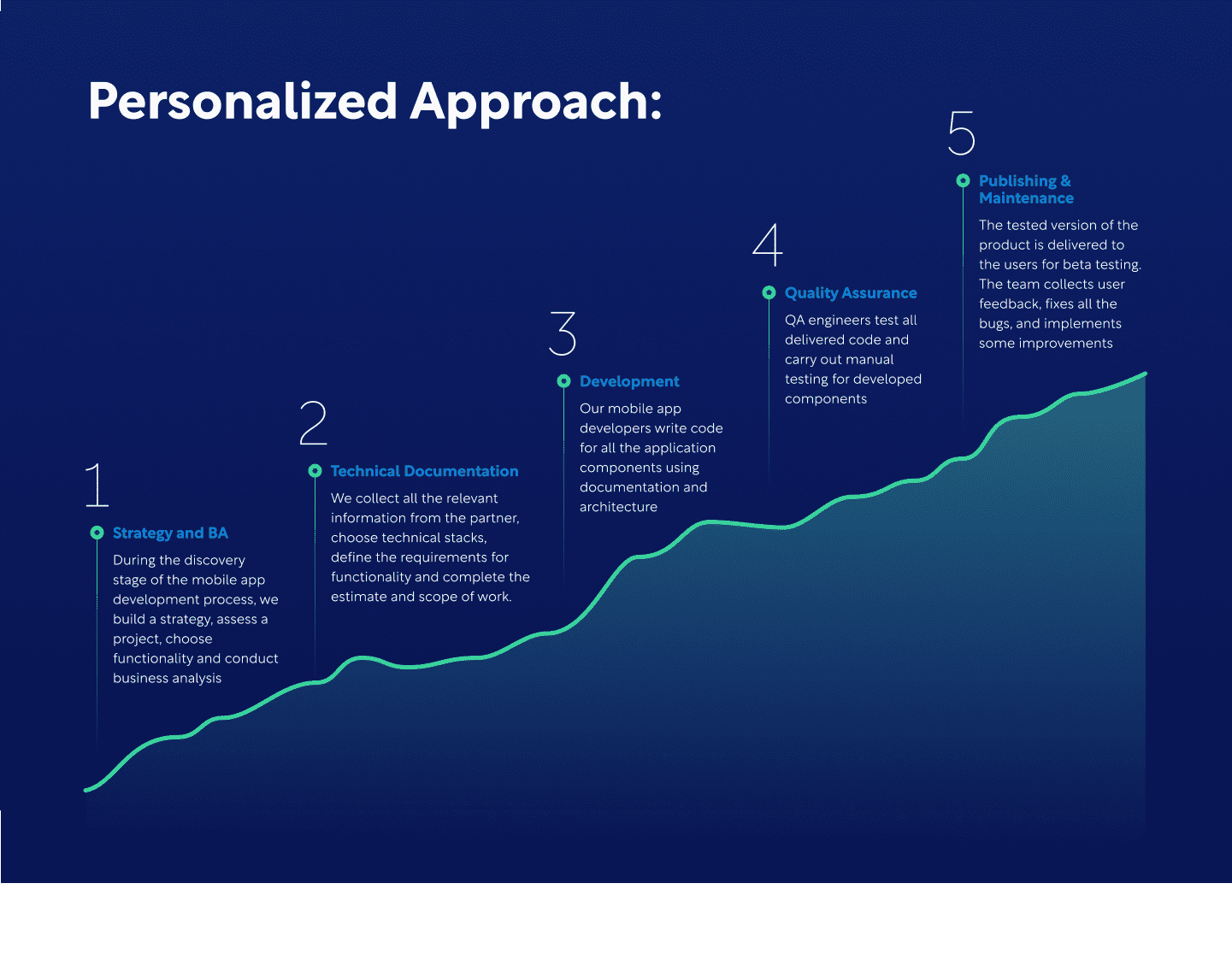

How to build a Fintech app that thousands of users will use? Our team has prepared a detailed guide in which we will tell you about each stage of Fintech app development.
Point 1: Develop and Describe Your Idea
First, you should create and outline your prospective product’s concept. Describe every single detail. It is crucial. This is the first phase in your development strategy. And the plan is needed to make the work on the project organized and structured.
In addition, a precise explanation of your proposal will assist your future team to comprehend what you expect to gain as a consequence.
Point 2: Marketing Research and Product Discovery
From this moment, work on product development begins directly. In general, this stage includes the following:
- Market Research
- Technology Adaptation
- Agile Methodology
You should study the market and the existing Fintech applications on the market. We recommend that you consider in detail the strengths and weaknesses of already functioning Fintech apps to make your product better.
Product discovery will help you understand whether it is worth creating a new product at all and whether people will use it. Here are the main steps of product discovery:
- Improve your ability to empathize with customers by familiarizing their underlying demands and emotions.
- Crowdsource your team’s various points of view to get a comprehensive picture of your customer.
- Pay attention to what your client says. Consider the customer’s issue source instead of rushing to a solution.
- To gain clarity, try visual mapping.
- Gather customer feedback from multiple means of communication (e.g., social media, email, customer service, user research, customer advisory board, etc.).
- Maintain objectivity. Are proposed remedies congruent with the problems, or are you prejudiced? Keep in mind that not every concept will be adopted.
- Validate your assumptions.
Point 3: UX Design: Prototyping, Product Logic and Navigation
Then you can start creating a UX design. You have a reduced probability of generating a solid UX product if you don’t have a sound UX design process. A well-defined and well-executed UX process, on the other hand, allows for the creation of amazing user experiences.
lication
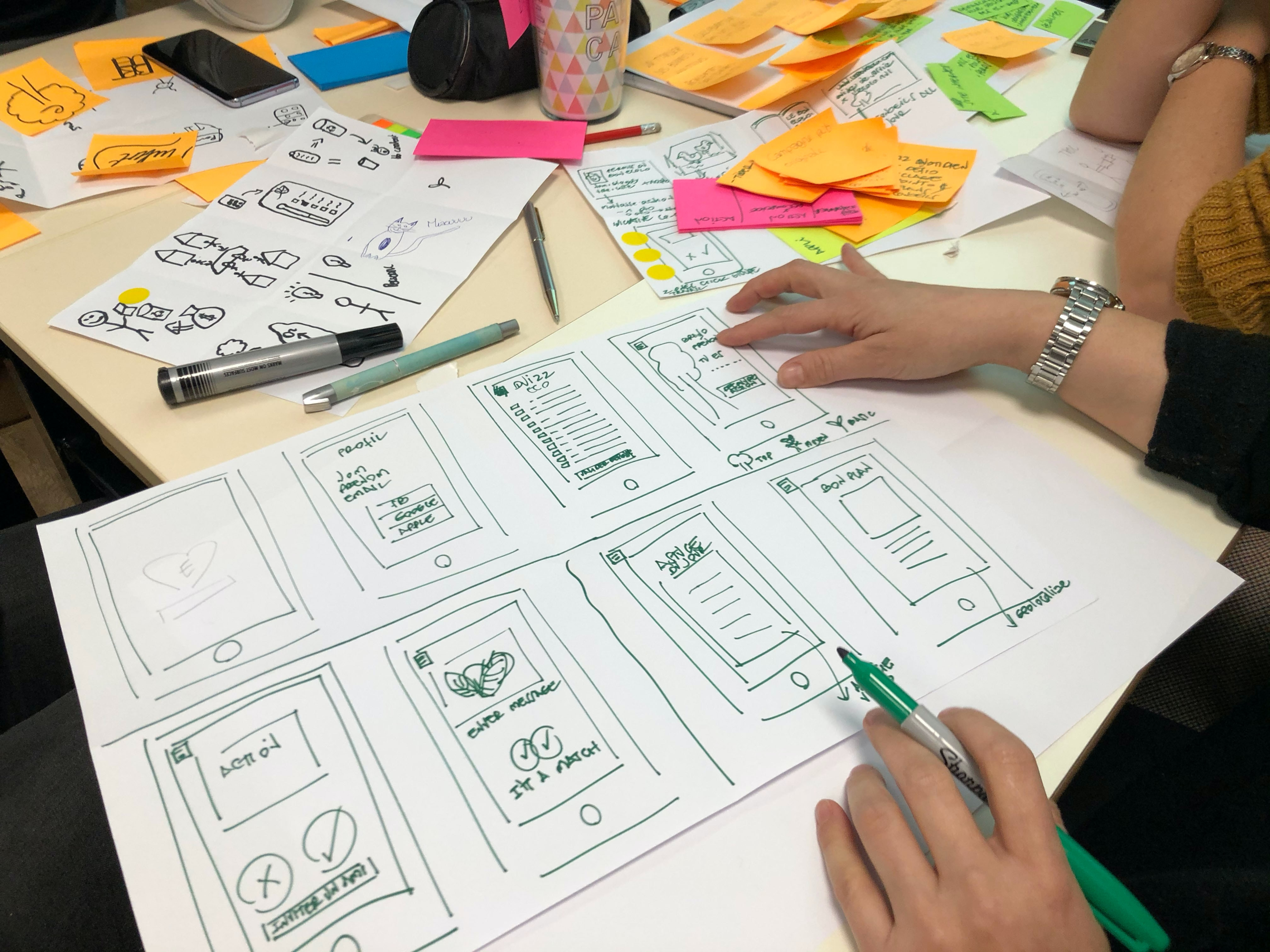

If we apply design thinking to product design, we’ll go through a UX process that includes the five steps below:
- Product definition
- Stakeholder interviews
- Value proposition mapping
- Concept sketching
2. Research
- Individual in-depth interviews
- Competitive research
3. Analysis
- Creating user personas
- Creating user stories
- Storyboarding
4. Design
- Sketching
- Creating wireframes
- Creating prototypes
- Creating a design specification
- Creating design systems
5. Validation
- Testing sessions
- Surveys
- Analytics
Point 4: Testing
After the UX design is ready, you will need to test it. At this stage, you should understand whether you have built the product logic correctly, whether it is clear to users where everything is located in the product, whether everything suits them, etc.
After receiving the test results, you will know whether you need to change something in the UX design or not.
At RewiSoft, we use our in-house UX Laboratory that helps analyze how people interact with the interface and uncover products’ usability gaps.
We use UX Eye Tracker, which allows exploring user behavior during interaction with the product. Only 1% of companies use this method. To know more about our UX Lab, read here.
Point 5: UI Design: Design System and Elements
How to build a Fintech app that will be visually appealing? Build a great UI design. User interface (UI) design is all about building interfaces with an emphasis on aesthetics and interaction. The objective of the UI designer is to build an interface that is both easy to use and pleasant to the eye.
The aesthetic decisions a designer takes while creating a product, such as an image, button, menu bar, or footer, are referred to as UI design. All of these factors will have an impact on the user’s engagement. Thus, they should be considered carefully.
Point 6: Start Fintech App Development Life Cycle
You should now convert the design into a functional product. The complete development life cycle procedure is separated into various parts. Let’s take a closer look at them one by one.
More about Fintech App Development.
Point 6.1: Product Technical Documentation
During this stage, all necessary information from the customer is gathered in order to produce a product that meets the client’s expectations and requirements. The team should create technical documentation and select technological stacks.
The team should also establish the needs for functionality (requirements for the admin panel) and user roles at this point (admin and super admin). The estimate and scope of work should be completed by the team.
Point 6.2: Fintech App Development
Mobile app developers write code for all application components using the documentation and architecture from the previous processes. Here are the main tech aspects to use during Fintech app development: Kotlin, Swift, Architecture principles, Network, Data, Firebase.
Point 6.3: Testing
QA engineers test all delivered code and carry out manual testing for developed components. Here are the main QA aspects to use: CI/CD, Integrational, Automation Strategy, Regression, Resource planning.
Point 6.4: Deployment & Integration
Following the QA team’s development and regression testing, the team moves on to production deployment and integration. The product’s tested version is distributed to people for beta testing. The team collects user comments, addresses all issues, and makes some enhancements.
Point 6.5: Maintenance
After deploying a product in the production environment, the product is maintained by a team. That is, if an issue arises that has to be resolved, or if enhancements need to be made, the development team will handle it.
Point 7: Analyze user feedback
Next, collect user feedback about your Fintech application. Take a survey to get answers to the following questions:
- Is it convenient to use a Fintech application?
- Do users encounter any problems while using the product?
- To what extent does a Fintech app cover the needs of users?
- What would users like to improve in the product?
- How does the product meet user expectations?
By getting answers to these questions, you will know what you need to change, remove or add to the product.
Point 8: Improve and develop
The creation of the product does not end there. After analyzing the opinion of users about your product, you should continue to improve and develop it. The main thing to remember – progress is the key to success!
How Can RewiSoft Help You?
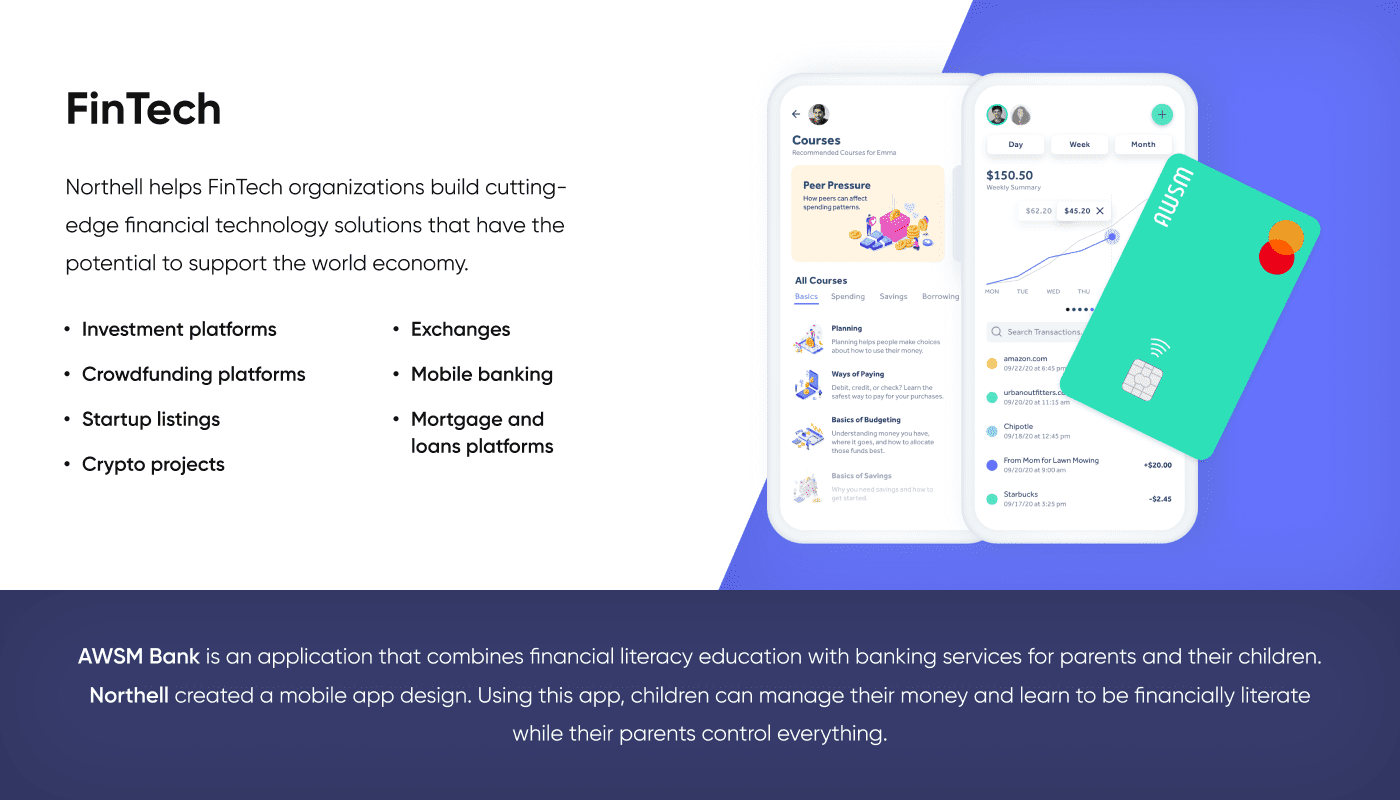

RewiSoft team (former Northell) is well experienced in building Fintech apps, and we have already provided our partners from the FinTech industry with outstanding mobile development services.
We have worked on the development of the following projects:
- Mortgage applications
- E-wallets
- Lending applications
- Loan applications
- Neobanks
- Stock and trading applications
What can we handle for you?
- Full-cycle development (UX/UI, back-end/front-end)
- Back-office management
- Security and compliance
- Data collection & handling
One of our partners, FXF is a cryptocurrency application that aggregates offers from participating exchanges, thus, providing users with access to the best buy and sell prices.


The project needed exceptional standardization, unification of the cryptocurrency trading system, and a unique set of features to make the solution fast, simple, and convenient both for beginner and advanced traders.
Our team created the project from scratch, including the desktop version, responsive design of the web app, and a mobile app with unique features to deliver the top-level user experience. For FXF RewiSoft team created the following:
- One account and one wallet for convenient use.
- Unique features combined in one platform.
- Ability to view 4 markets at the same time.
- Easy registration and KYC functionality.
- Advanced security.
- A desktop version + responsive design + advanced app to use the system on the go.
- Rich and user-friendly design both for beginner and advanced traders.
And one more project we worked on was Cardeo. Cardeo is an open banking application that brings data from credit cards into a single view. Cardeo application has a special repayment calculator that works out how long it will take users to pay off their credit card borrowing.
Our partner needed an application that would work smoothly and securely. For this project, our team created wireframes, design, responsive design, front-end part and back-end part.
If you are planning to build a great Fintech application and need a reliable team, get in touch with us. We will discuss all the details of your project and offer the best option for translating your idea into a real product.
How Much Does FinTech App Development Cost?
How to build a successful Fintech app and not lose money? Let’s take a closer look at how much the development of a mobile Fintech application can cost depending on the size of the project.
Small Project
$30,000 or more is the price for a single-platform financial app with basic capabilities and a user-friendly design.
Medium Sized
A more complex system with additional features and current technology can cost $45,000+.
Enterprise
A complex Fintech application of a larger size will cost approximately $60,000+.
However, remember that the following factors influence the final price of developing your Fintech application:
- Country where the development team is located
- The number of your requests
- Functional complexity
- Further scaling
How to Build a Fintech App: Summary
Summing up, we can say that Fintech application development is rather a challenging process. But with a good and reliable Fintech app development team, you will be able to quickly and efficiently get what you want. Here are some essential points to remember during Fintech mobile app development:
- Conduct as much analysis and research as possible before starting product development.
- Look for a good and trustworthy team with solid Fintech knowledge and skills.
- Use the MVP methodology and not overload your Fintech mobile application with unnecessary functionality.
- Listen to users. They will help make a product that will be in demand.
- Use modern testing tools for a deeper analysis of the product.
We hope that thanks to our article, you have become one step closer to Fintech mobile app development.








